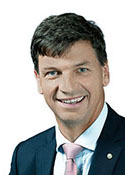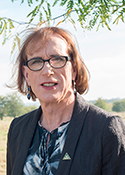Hume
Margin: Liberal 13.7%
Region: Southern Sydney Fringe, New South Wales
In a nutshell: A redistribution makeover has brought the rural seat of Hume into the southern outskirts of Sydney, and briefly endangered the preselection of its sitting member, rising Liberal star Angus Taylor.
Candidates in ballot paper order

|
AOIFE CHAMPION-FASHOYIN LINDSAY D COSGROVE ANGUS TAYLOR TREVOR ANTHONEY ADRIAN VAN DER BYL MICHAELA SHERWOOD |
The electorate of Hume extends from the south-western outskirts of Sydney southwards to Goulburn, and westwards to the shires of Upper Lachlan and Boorowa. The redistribution has substantially changed the electorate by adding the rapidly growing Sydney fringe centre of Camden from Macarthur, providing it with nearly 45,000 out of slightly more than 100,000 voters. Counter-balancing losses are at the western end of the electorate, including Cowra, Young and Cootamundra, where 29,000 voters are transferred to Riverina, and an adjoining area to the north of the Australian Capital Territory, where 14,000 go to Eden-Monaro. The changes have slightly improved the Liberal margin, from 11.5% to 13.7%.
Hume has existed as an electorate in name since federation, but its territory has changed almost entirely since that time, when it covered Albury and surrounding territory near the Victorian border. Its main population centre, Goulburn, was accommodated by Werriwa and then Eden-Monaro before 1984, then by Gilmore until 1993. Subsequent redistributions continued to reorient the electorate eastwards, a process that has been maintained with the latest redistribution, which brings it into Sydney’s orbit for the first time. Hume changed hands between the Country Party and Labor with great regularity between 1919 until 1974, after which the Labor vote went into a long-term decline. This pattern was reflected in Goulburn, which provided Labor with a strong base of support until the mid-1960s, but has since become strongly conservative.
The Liberals gained Hume from the Nationals when the seat absorbed Wagga Wagga in the redistribution that expanded the size of parliament in 1984, resulting in a contest between Stephen Lusher, who held Hume for the Nationals, was defeated by Wal Fife, the Liberal member for Farrer and a former state member for Wagga Wagga. Fife retained the seat until his retirement in 1993, when another significant redistribution added Goulburn from Gilmore. The seat was then won for the Nationals by John Sharp, who had previously been the member for Gilmore, which fell to Labor in his absence. A travel rorts scandal cost Sharp his job as Transport Minister during the first term of the Howard government, and he retired in 1998.
In a remarkable turn-around on the previous three-cornered contest in 1993, the Nationals polled less than 10% of the vote with Sharp’s departure at the 1998 election, when the seat was easily won for the Liberals by Alby Schultz, the member for the state seat of Burrinjuck since 1988. When Schultz retired at the 2013 election, there were suggestions the seat might be contested for the Nationals by Senator Fiona Nash or Katrina Hodgkinson, who succeeded Schultz in Burrinjuck in 1999 and became Primary Industries and Small Business Minister after the 2011 state election. However, the party agreed to leave the field clear for the Liberals during post-redistribution coalition negotiations, as reports of internal polling suggested they were unlikely to be competitive in any case.
Hume duly passed at the 2013 election to Liberal candidate Angus Taylor, a 45-year-old Sydney lawyer, Rhodes Scholar and triathlete. Taylor won preselection with the backing of Schultz and Tony Abbott, and was also said to be close to Malcolm Turnbull. Following Turnbull’s successful leadership challenge in September 2015, Taylor was one of a small number of Liberal MPs whose loyalties were rated as “uncertain” in The Australian’s accounting of who supported whom. Taylor has long been rated a ministerial if not a leadership contender, and there was some surprise when he failed to win promotion to Turnbull’s new ministry.
Despite his reputation, Taylor’s position in Hume was threatened when draft electoral boundaries published last October weakened Russell Matheson’s position in the neighbouring seat of Macarthur, while adding party branches controlled by him and his local allies to Hume. The manoeuvres that followed were executed against a backdrop of intensifying rivalry between the Right, to which Taylor is aligned, and the increasingly ascendant moderate faction, to which Matheson and his local faction had recently defected. The prospect of Taylor being rolled caused consternation owing to his reputation as a senior ministerial prospect, and the lack of any absence of any similar expectations for Matheson. The situation was resolved in February when the Prime Minister gave Taylor the promotion he had missed out on in September, assigning him parliamentary secretary rank as Assistant Minister for Cities and Digital Transformation, and told Matheson he was expected to stay put in Macarthur.
Analysis by William Bowe. Read William’s blog, The Poll Bludger.


